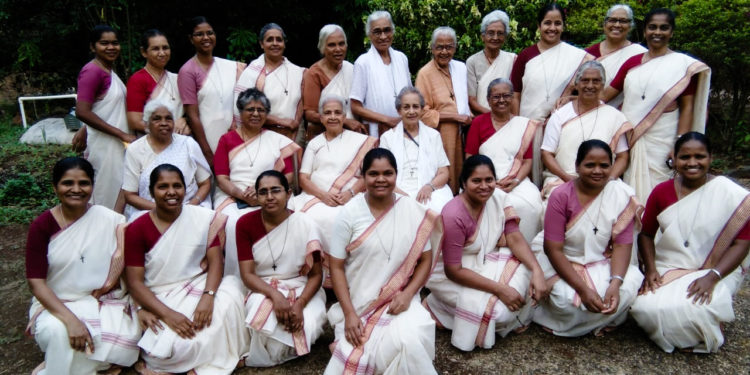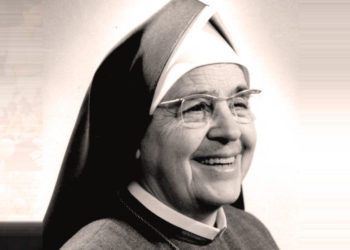Hospitals
Prior to 1967, Medical mission Sisters’ aim was to give medical aid and care to the sick, primarily through hospitals, oriented to the individual as a patient. This also included establishing training schools for nurses and midwives and some aspects of preventive health.
MMS beginnings in North India were no different. MMS began in 1939 in an earthquake shaken cathedral and two one-storey buildings, in old Patna city. By November 1958 from a cramped family-style hospital, MMS moved to a new bigger more complex modern Holy Family Hospital at Kurji (KHFH). And it continues to provide quality care to the sick, poor and needy with dedication and team spirit (see www.kurjiholyfamilyhospital.org) in partnership from the year 2000 with the Sisters of Charity of Nazareth (SCN)—the first of its kind in successfully running a hospital—besides 15 collaborators, staff and students.
This year MMS have signed an agreement of partnership with the SCNs for seven years. From June 1, 2012 the first Sister of Charity of Nazareth is Administrator and a Medical Mission Sister is Associate Administrator. Another first in the State of Bihar was the inauguration on September 1, 2011 of Kurji Holy Family Hospital College of Nursing, affiliated to Aryabhatta Knowledge University, Patna. The College has already admitted its first 15 students. Also, from next year the BSc Nursing course will begin. Two new clinics, Endocrinology and Speech and Audiology have started. And then, in 1947 a rural 80 bed facility, Holy Family Hospital, Mandar, Ranchi Unit, saw the light of day—a response to the unmet medical needs of the adivasis of the then Chotanagpur.
Today with numerous hospitals that have mushroomed around Holy Family Hospital, Mandar, the emphasis includes newer medical areas. Rural Integrated Holistic Approach to Alcoholism (RIHAA) was begun to deal with the drinking menace among adivasis men and women with a ward for in- patients to serve the hospitalization needs of the recovering addicts. Family counseling therapies and family seminars are also part of the functioning of this Department.
The Alternative System of Medicine with its demonstration herbal garden is another new area that is flourishing. A Government program for safe mother and child has started which has increased the OB/Gynecology cases. Geriatrics and Global Fund for HIV/AIDS, TB and Malaria for ANM are other areas being explored. The next big hospital was in the Capital city, Delhi. The foundation was laid in 1952 and officially blessed by Archbishop Joseph Fernandes on June 8, 1956. The Capital was no exception to the nation-wide need for medical care. On July 1992 after more than 10 years of a process of transition and localization, Medical Mission Sisters relinquished their rights and privileges in the management and stewardship of HFH, New Delhi in favour of the Catholic Archdiocese of Delhi. The present Administration is in the process of celebrating the Diamond Jubilee of the Foundation Holy Family Hospital, New Delhi. For the Diamond Jubilee year of the hospital the Administration and Archdiocese are going to celebrate the life and legacy of Mother (Dr.) Anna Dengel, the Founder of this Hospital. The Jubilee year will be inaugurated at HFH on October 10, 2012 and a documentary is being made on Mother Dengel and the growth of the Hospital.
To mark the occasion the Hospital is also launching the Mother (Dr.) Anna Dengel Memorial Oration and is also in the process of awarding the Mother (Dr.) Anna Dengel Memorial Award. HFH wants to recognize individuals who have pushed the boundaries of excellence in providing care to the sick and suffering, especially the poor and marginalized. Other smaller hospitals also were established and handed over between 1967 and 1992, as MMS moved on. The hospitals that remain in our hands, serve as a base for outreach programs and referral centers for persons needing hospital follow-up.
The hospitals improved the health of many people and trained thousands of local health professionals and para-medicals in India. However, in hospital after hospital, we saw that a great number of our patients made repeated visits to us for the same diseases. This led to increased emphasis on public health through training and organized programs for preventive health care and development and later to the initiation of numerous grassroots courses for Village Health Workers, Traditional Birth Attendants and Health Animators. So from being purely hospital-centered, there was a movement toward the wider community and particularly the poor in it; from curing disease to promoting health; from service we give to patients to collaborating with them toward health and healing.







